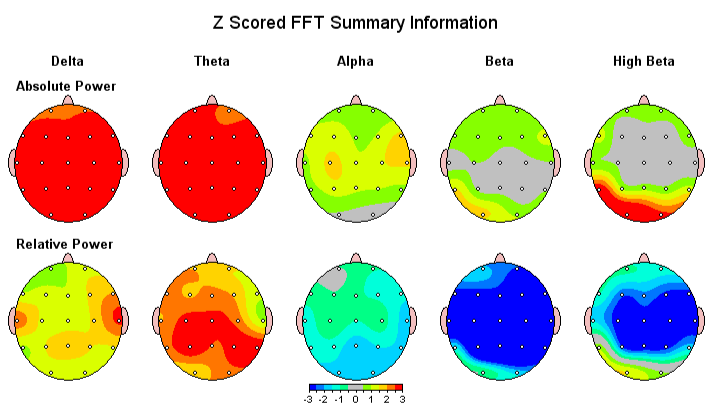Unveiling the Connection Among qEEG and Sleep Disorder Patterns for Improved Assessment and Treatment
Unveiling the Connection Among qEEG and Sleep Disorder Patterns for Improved Assessment and Treatment
Blog Article
Slumber hypopnea is a common sleep disorder that impacts many people around the world. It occurs when a individual's respiration is interrupted during sleep, leading to subpar slumber quality and various medical concerns. One of the ways researchers and doctors are endeavoring to improve understand and diagnose sleep apnea is through a method called quantified electroencephalography, or qEEG. This method assesses the electronic activity of the brain and can offer important understandings into how sleep apnea impacts cerebral function and general well-being.
qEEG involves positioning small sensors on the head to capture brain waves. These brain oscillations are then examined to identify patterns that may indicate sleep conditions, including sleep apnea. By analyzing these trends, healthcare professionals can obtain a more precise understanding of how sleep apnea interrupts normal brain activity during slumber. This data can be essential for developing effective therapeutic strategies customized to individual patients. Understanding the connection between qEEG and sleep apnea can lead to enhanced identification techniques and better outcomes for those affected by this condition.
Studies has demonstrated that people with sleep apnea often display distinct changes in their brain wave patterns. For example, during instances of apnea, the cerebrum may exhibit heightened activity in certain areas while other areas become more engaged. These changes can affect how well a individual slumbers and how refreshed they perceive upon awakening. By using qEEG to monitor these cerebral oscillation trends, physicians can recognize specific traits of sleep apnea in patients, which can help in making a more precise identification. This is particularly crucial because sleep apnea can occasionally be confused for alternative sleep conditions, leading to inappropriate treatments.
In addition to improving diagnosis, qEEG can also serve a part in assessing the efficacy of therapies for sleep apnea. For example, after a client starts employing a constant beneficial airway force (CPAP) device, which assists maintain the airway open during slumber, qEEG can be used to assess changes in brain activity. If the brain shows improved patterns of sleep after starting treatment, it may indicate that the therapy is working effectively. This feedback can assist doctors make necessary adjustments to treatment plans, ensuring that patients receive the best care feasible.
In summary, the relationship between qEEG and sleep apnea trends is an promising area of study that offers potential for improving identification and therapy. By comprehending how sleep apnea affects brain function, healthcare providers can develop more effective strategies to assist clients achieve better sleep and improve their overall health. As research progresses to qEEG and sleep disorder rehabilitation advance, it is probable that qEEG will turn into an integral instrument in the battle against sleep apnea, leading to better outcomes for those who suffer from this difficult condition.